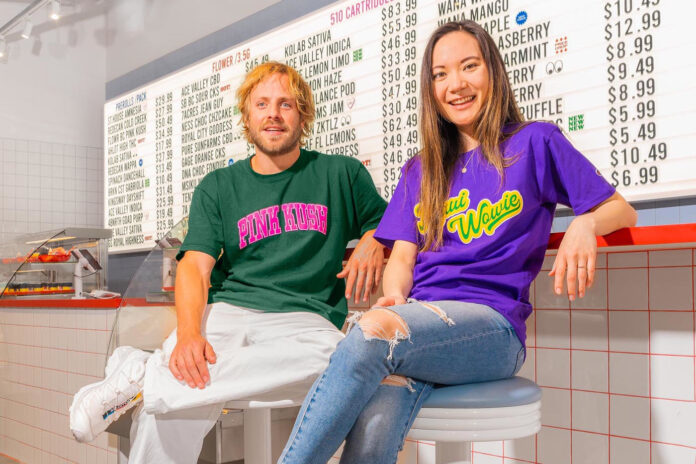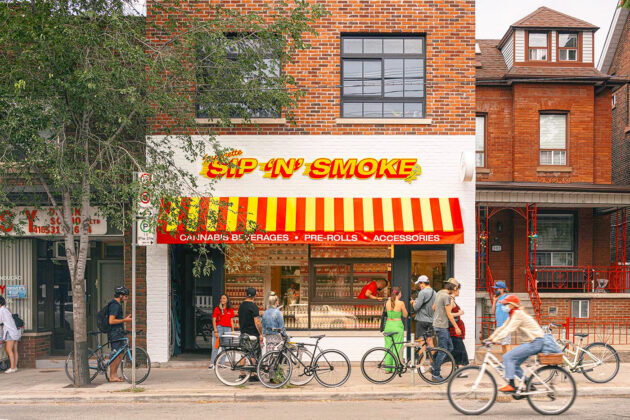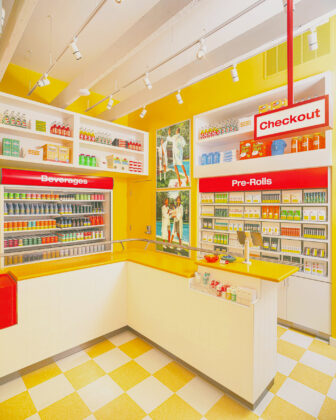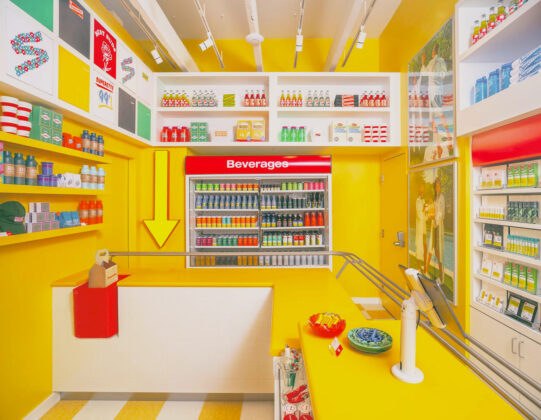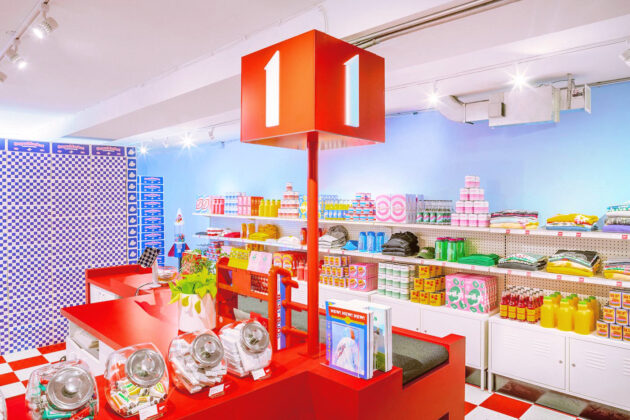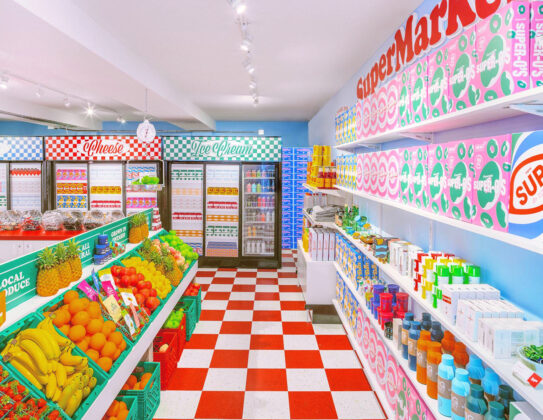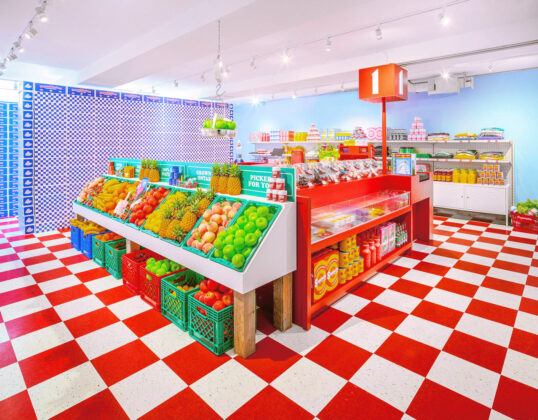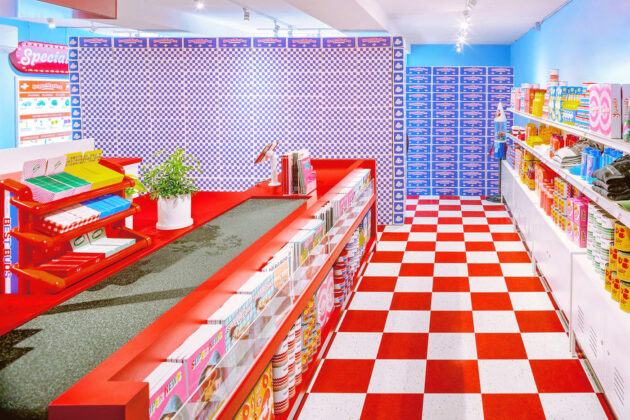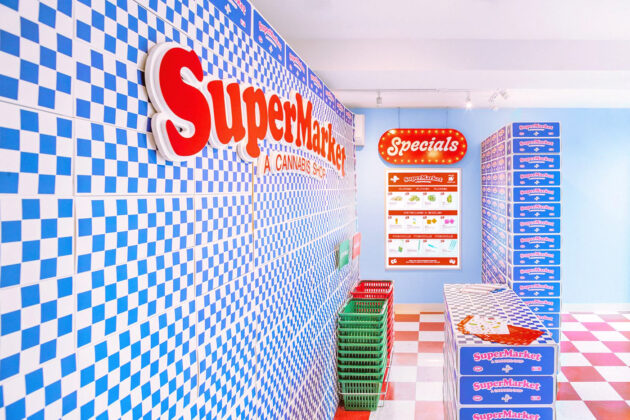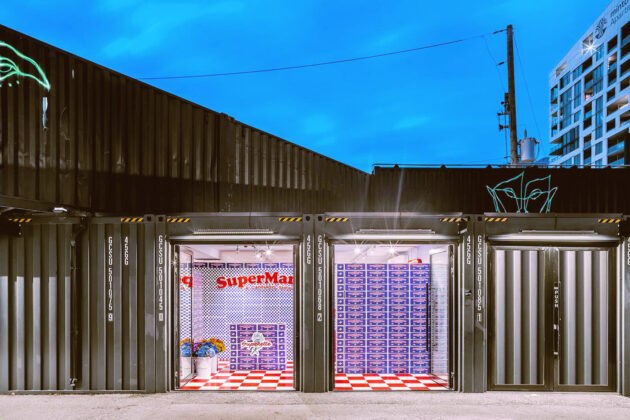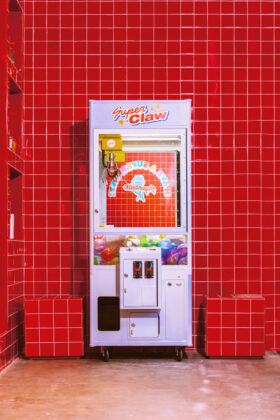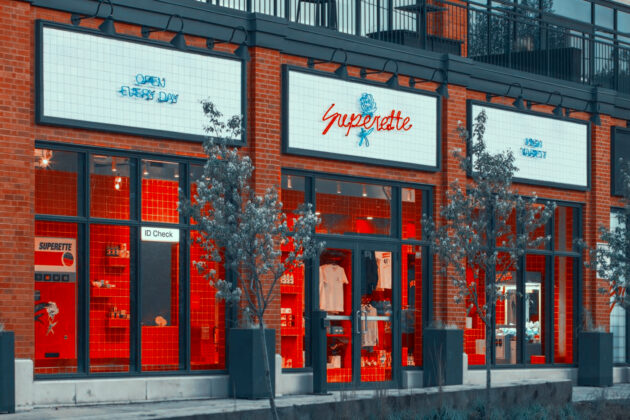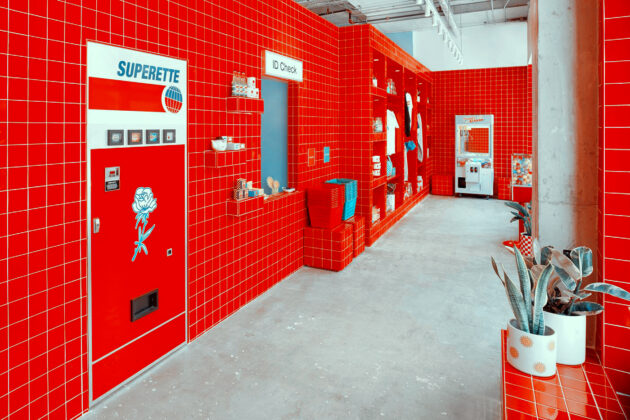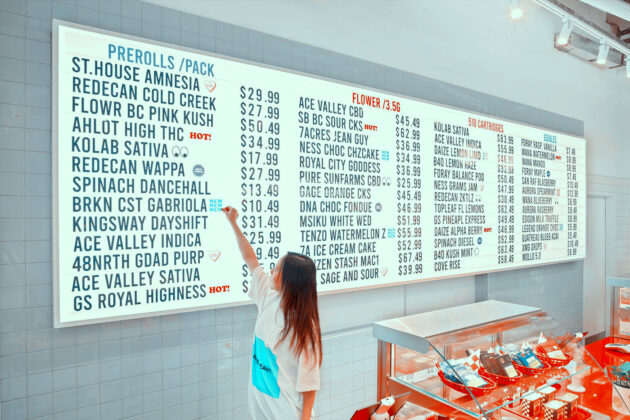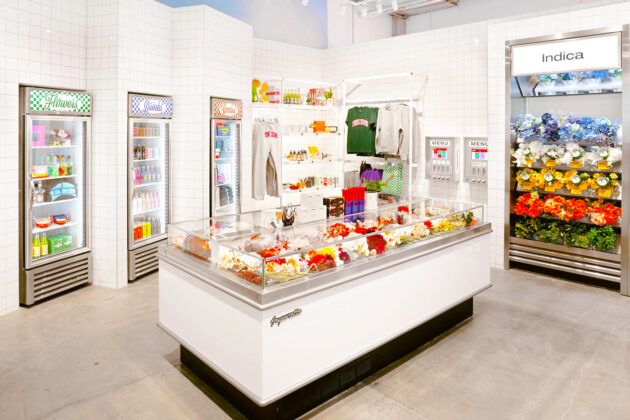A 2019 Harvard Business Review article titled “Why Constraints are Good for Innovation” investigated the positive influence restrictions have on creative thinking and problem-solving. While conventional wisdom suggests unfettered freedom yields a more fertile breeding ground for creativity, “constraints provide focus and a creative challenge that motivates people to search for and connect information from different sources to generate novel ideas for new products, services, or business processes,” the authors asserted.
In the case of Superette, the visually delightful dispensary chain quickly turning heads in Canada, the notoriously constrictive nature of the country’s regulatory environment proved advantageous for founders Mimi Lam and Drummond Munro. The ambitious, aesthetically arresting stores draw inspiration from bygone bodegas, mini marts, and neighborhood delis, standing out as stark examples of what is possible in retail if you apply a creative mind to the myriad limitations on expression.
“You can either complain about it, or you can be smart and do something about it,” said Lam, an Ottawa native and investment banker turned cannabis entrepreneur. “We will be creative regardless of the restrictions we find ourselves working with. In the Canadian market, this has allowed us to really stand out because, while we won’t allow the rules to stop us being creative, they do seem to stop others from being creative.”
Simple mission, ambitious plan
The company opened its first of six locations in Lam’s hometown in 2019 with the simple mission of reinjecting fun into cannabis, a key product benefit that inexplicably has been overlooked in favor of the nebulous and bland “lifestyle” trend of the past few years. “Every brand needs some kind of reason for being,” Lam explained. “For us, we wanted to make the cannabis experience fun.
“Cannabis can be used for a multitude of reasons,” she continued, “but one of the core reasons, especially for the adult-use market, is to have fun. We saw there was a disconnect between the customers buying cannabis to have fun and the lack of fun retail experiences.”
Superette is unquestionably, unmistakably fun. From the retro-futuristic dummy packaging and fake fruit to coin-operated arcade games and hype merch lines, the brand oozes irreverence at every touchpoint. Its saccharine primary color schemes call to mind the alternate reality dreamed up by biannual Italian conceptual art book Toiletpaper Magazine. Surreal, immersive, and extrasensory, there are perhaps no dispensaries anywhere in North America so clear and unwavering in their vision.
The young founders cut their teeth at the internationally known Toronto dispensary chain Tokyo Smoke, where Lam was the director of corporate development. The pair raised a relatively modest friends-and-family round to get the initial store off the ground, and since then Superettes have sprouted with remarkable cadence (two in Ottawa, four in Toronto, and four more under development).
While the initial brand foundation was created with Toronto-based studio Design of Brand, Lam and Munro play an extremely active role in the creative process. “We are overseeing every aspect of the brand. Everything,” Lam said. “No creative detail goes past without Drummond’s and my internal approval. We care about every single detail, because each one adds up to create the entire vibe and influences how customers interact with that touch point.”
Each store is an impressively different iteration of the same distinct theme, bent to fit a variety of storefronts and basted in a different primary color. Canadian restrictions mean cannabis cannot be visible from the street. While many dispensaries simply frost their windows, Superette has created a series of transitional entry points for its shops, almost preparing customers for the immersive madness that lies in wait.
“For example, in one of our stores, we merchandised the front area with apparel so people can go there and buy clothing and not even enter the cannabis space at all,” said Lam. “We want to make everything extremely practical and use the space effectively.”
At the Glebe location in Ottawa, consumers can peruse the chain’s vivid fashion line emblazoned with favorite strain names (Pink Kush, Maui Wowie) before picking up a classic red plastic shopping basket, staggering through a hall of mirrors (!), and entering the deli-esque shop floor. The yolk-colored Sip-N-Smoke location in Toronto mimics a mini-mart, complete with the iconic striped awning and angelic 1970s-style ads for lighters and beverages. The Stackt market in Toronto is housed in a shipping container.
“When you go to grocery stores, convenience stores, and diners, they feel familiar and timeless, but every one of those can have elements that are special to the communities they are in, and while they might have similarities between them, they can also be very different,” Lam said. “That was something we really tried to emphasize across the stores.”
Superette’s delightful designs
A handful of key design consistencies across the stores relates each to the others. For instance, every store displays flower jars nestled in a wall of fake florals. “We really didn’t want to be like everyone else and have the standard magnified jars for flower,” Lam said. “So we sought out an industrial designer locally to reimagine our presentation jars and then housed them in a wall of flowers—sort of like ‘stop and smell the flowers.’”
Another consistent element is the shunning of merchandised or branded shelves in favor of playful dummy packaging, which enables more daring brands to circumvent some of Canada’s onerous marketing and presentation restrictions while participating in the stores’ unique themes.
“It’s important to us that every square inch of our space is on-brand, so we don’t use any of the typical trade marketing collateral. Instead, we like to showcase the brands we carry in fun ways that make sense with the rest of our store vibe,” Lam explained, adding the vanity packaging is only for display purposes and doesn’t contain products. “The response we get is actually really interesting, and you see certain companies create really beautiful and interesting packages, while others don’t care at all and ask us to use their regulated versions.
“I think this speaks to the level of thoughtfulness from other brands, and our hope is that we inspire or nudge others to raise their own creative standards,” she added.
Perhaps unsurprisingly, Superette already has been approached to franchise the concept. However, Lamb and Munro are hesitant to place the precious concept into the hands of anyone less invested in maintaining the unwavering precision necessary for a concept this specific, particularly this early into their journey.
“We’re still trying to figure out what we’re doing today, and that’s just how we love to grow,” said Lam, insisting she and Munro will stay firmly in the creative hotseat for the foreseeable future. “Our hope is that our audience will grow along with us, and we can all go somewhere exciting together.”
That somewhere likely will be the United States, eventually. The pair have their eyes on the style-conscious markets of Los Angeles, San Francisco and, of course, New York City, where recreational sales are expected to open in 2023. Regardless of where they go and the creative limitations they encounter, Superette’s funhouse concept will delight and inspire audiences while beaming brighter and bolder than just about anything else around.







